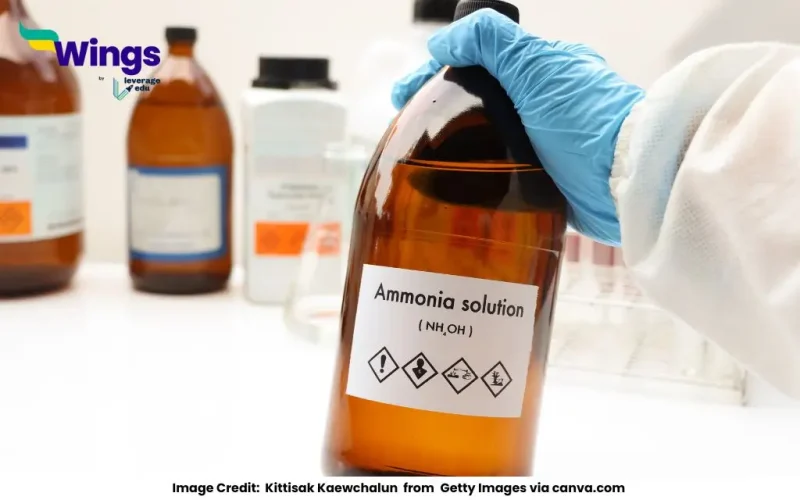The molar mass of ammonia (NH₃) is 17 g/mol. This value is determined by summing the atomic masses of its constituent elements: nitrogen (N) and hydrogen (H). Ammonia, a compound consisting of one nitrogen atom and three hydrogen atoms, is widely used in industries such as agriculture and pharmaceuticals.
Complete Answer:
Here is a complete analysis of what is the molar mass of Ammonia NH3:
- The atomic mass of Nitrogen (N) = 14 g/mol
- The atomic mass of Hydrogen (H) = 1 g/mol
There is 1 nitrogen atom and 3 hydrogen atoms in Ammonia
Now, sum the total molar mass:
Molar Mass = (1 x 14) + (3 x 1) = 14 + 3 = 17 g/mol
Thus, the molar mass of ammonia is 17 g/mol.
What is Ammonia (NH3)?
Ammonia is a colourless gas with a distinct pungent odour. It is highly soluble in water and plays a crucial role in:
- Agriculture: Used in fertilisers to enrich soil with nitrogen.
- Chemicals: A precursor to various compounds, including nitric acid and urea.
- Refrigeration: Used in industrial cooling systems due to its thermal properties.
To understand the molar mass of ammonia in practical terms, consider this example: If you weigh 17 grams of ammonia, you have exactly 1 mole of NH₃ molecules, which equals 6.022 × 10²³ molecules (Avogadro’s number).
Common Doubts in Chemistry
 60,000+ students trusted us with their dreams. Take the first step today!
60,000+ students trusted us with their dreams. Take the first step today!


 One app for all your study abroad needs
One app for all your study abroad needs










